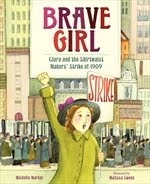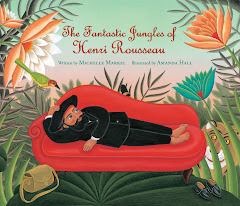
Today, Edward Einhorn, author of A Very Improbable Story: A Math Adventure, answers some questions about his book.
What was the inspiration for A Very Improbable Story? Was it an idea, an image, or....?
I knew I was interested in tackling math concepts, because when I work as a tutor, my favorite thing to tutor is math. I love the moment when students understand an idea for the first time, when what was once difficult or stressful becomes exciting and fun. And then they have that extra piece of knowledge for the rest of their lives.
One concept that often seems most imposing is probability. It can also be one of the most fun, so it seemed a great candidate for a picture book--especially because I had never seen one on the subject before. And the image of a magical cat on a boy's head--I don't know why, but it popped into my head. So I went with it.
Does the book resemble your original concept? Did you revise several times?
There were a number of revisions. The basic concept stayed the same but the details changed a lot. The biggest additions was probably the soccer theme. It both brought urgency to the story and allowed a good real world application for probability.
What was the most challenging aspect of writing the book?
Probability is a complicated idea to explain in a very few words. Keeping the story simple and understandable while conveying knowledge was definitely the biggest challenge. But that challenge was also what I loved most about writing the book.
How would you like teachers and parents to use the book?
First of all, the book should simply be read and enjoyed. Math aside, I hope people can appreciate it and read it aloud as simply the story of a boy and a magical cat.
Then I think playing with the concept through math games like the one in the story would both be fun and instructional. I sometimes visit schools and read the book and teach a few lessons based on the book, one using Oatie Woofs (the fictional cereal from the book) and one using marbles. The Oatie Woofs lesson is on my website. Feel free to steal it! Or make up your own.
Alas, April draws to a close, so this is the final interview in celebration of Math Awareness Month. I'd like to thank Edward, Betsy and Loreen for stopping by The Cat & The Fiddle to give us insights into the creation of their books. You've proven that magic, poetry and whimsy can play a role in math instruction. We look forward to more!








